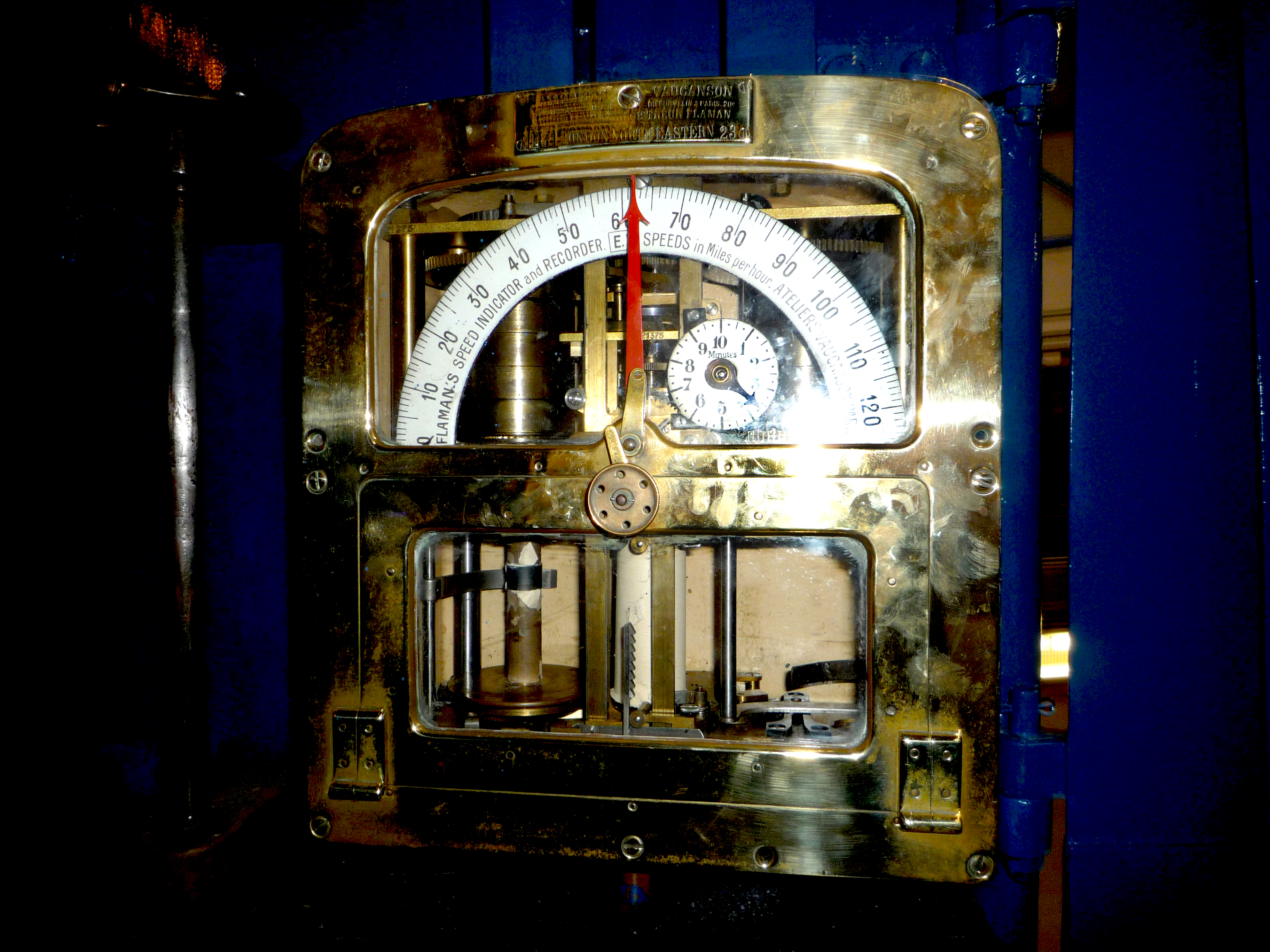Volunteer Keith Taylor explains the story behind an intriguing object from our collection.
For a long time, most of the world’s railway locomotives were not fitted with any kind of speed indicating device. In France, however, Nicolas Flaman designed a unit which was fitted to most French locomotives even before the outbreak of the First World War in 1914. Eventually, these same recording devices were fitted to British locomotives.

One was fitted to Mallard and was no doubt studied with interest on 3 July 1938, when it would have shown a maximum speed of just over 126 miles per hour. It is still in place in the cab of our locomotive and you can see another example in the Warehouse.
The Flaman Speed Recorder/Speedo, is no doubt a fine piece of equipment etc, however, I cannot understand why it is located under the Fireman’s seat on Mallard. I wonder how much attentition was payed to it, by the Driver in day to day service, when you consider he should be looking forward (signals etc.) when the locomotive is in motion, also the Fireman would be standing in front of it when firing the locomotive. We’re all A4’s the same? The Speedo, should be in front of the Driver, and it is poorly placed on Mallard! (I my opinion.) Regards, Chris Cleary
The Flaman is an integrating device which derives speed from the distance covered by the locomotive in a set period measured by an internal clock. As the input shaft driven from the locomotive wheels rotates, a cam mounted on it pushes a pawl back and forth and this in turn rotates a gear wheel one tooth at a time. The amount of rotation is thus a measure of speed. The counting period is 3.6 seconds, followed by a period of 1.2 seconds during which the counting gear wheel returns to zero and the counting recommences. The device thus makes a speed measurement every 4.8 seconds. It is arranged such that the maximum indicated speed (in this case 120 mph) corresponds to a count of 80 teeth. So the speed is indicated in increments of 1.5 mph. In order to prevent damage to the machine if wheelspin occurs, the drive pawl is disconnected from the counting gear wheel if the count goes beyond 84 teeth. So by sheer coincidence, the maximum speed that Mallard`s Flaman could indicate would be 84 x 1.5 =126mph. However the counting gear would advance by 84 teeth only if 126mph was sustained over the full counting period of 3.6 seconds. The 126mph claim was based on a very short duration (some accounts say 1 second) “blip” on the dynamometer recording chart. Thus even if the Flaman was set to a very high accuracy, it would not have indicated more than 124.5mph. It was certainly not used as the primary speed indicator on the record run.
The Flaman input shaft is connected directly to the locomotive wheels and is thus a hazard if not fully protected. To get the recorder in front of the driver would have required the shaft to pass through (and be shielded in) a very congested area. Unless the Flaman and its drive was integrated into the initial design, this would have been very difficult. In contrast, the drive shaft can come through the cab floor directly into the recorder with no exposed rotating parts if the Flaman is under the fireman`s seat.
I am happy to provide further details of how the Flaman works. Please ring 01332 559237 if you are interested. Bob Illingworth
Hello Bob,
You appear to have quite some insight into the Flaman’s speed recorder it would be great if you could contact me.
rob_reed38@yahoo.com.au